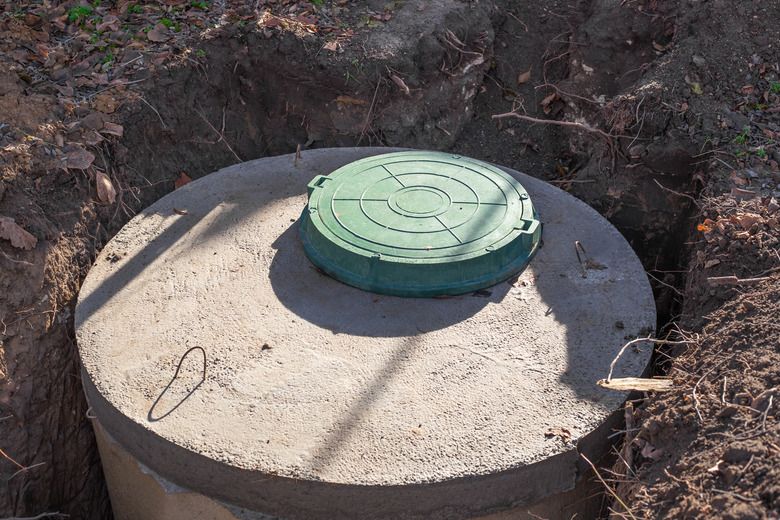Concrete Vs. Plastic Septic Tank
Septic tanks are an important aspect of the infrastructure of your property, and it's important to know the advantages and disadvantages of the possible materials before deciding on a type of septic tank. The most common materials for septic tanks are concrete and plastic, each with different considerations.
Plastic Septic Tanks
Plastic septic tanks are made of durable plastic and are much lighter and more cost-effective than concrete septic tanks. Because they're light, installation is much simpler and cheaper than concrete tanks, with no heavy equipment and a wider range of locations where they can be installed. According to the Pink Plumber, plastic septic tanks are also completely immune to water-based corrosion, and plastic is more flexible than concrete, leading it to be more resistant to certain forms of damage.
However, plastic is also not as sturdy as concrete and can be crushed by weight from above. Heavy soil or the weight of vehicles driving over the tank can crack the tank. Plastic tanks are also susceptible to environmental damage and require more maintenance in general than concrete tanks.
They have a lower effluent level and can sometimes "float" if the water table is high, rising above their intended depth. This "floating" can rupture plumbing around the tank or the tank can even break the surface above it. Finally, plastic septic tanks are not approved for use in some states.
Concrete Septic Tanks
Concrete septic tanks are durable and, under the right conditions, can be extremely long-lasting as well, with a longevity up to 40 years. Concrete tanks are resilient and resistant to environmental damage, and, therefore, generally do not need as much maintenance as plastic tanks.
Concrete tanks suffer no ill effects from the weight above them, being generally immune to crushing damage or damage from soil conditions. Being extremely heavy, concrete tanks are completely immune to "floating," and Septic Tank Pro notes that concrete tanks have a higher effluent level. Finally, concrete tanks are approved for use in all 50 states.
However, concrete tanks are much more expensive, in large part because of their weight. They are also difficult to transport and install and are less ideal for remote locations. Installation requires heavy equipment and concrete tanks are generally more disruptive to both install and repair. Additionally, concrete tanks are vulnerable to corrosion and can crack as they age, especially if they aren't maintained properly.
Choosing a Septic Tank
Concrete is often the default choice because it's allowed in every state, has been the construction material of choice for a long time and is more resistant to damage caused by weight or shifting. However, when cost is a consideration, plastic wins out handily, and if the home is in a remote location, the ease of transport and installation is hard to beat. Concrete tanks cost multiple thousands of dollars, while plastic tanks are considerably cheaper.
One important deciding factor is the quality of your soil. If you have a high level of acidic groundwater, this can damage a concrete septic tank, so plastic would be the way to go. Of course, another deciding factor is zoning regulations: If plastic is not allowed in your area, you're going to have to go with concrete.
While there are many factors to consider, both concrete and plastic are solid choices for septic tanks. Consider your situation and your location and go with the choice that feels appropriate.
